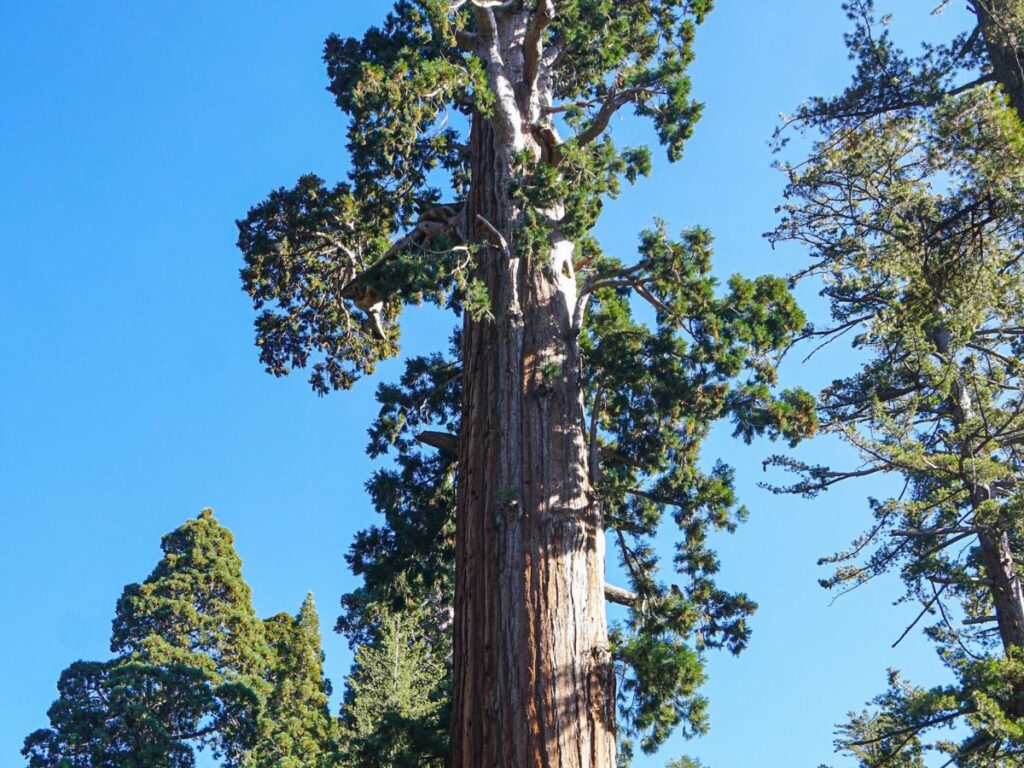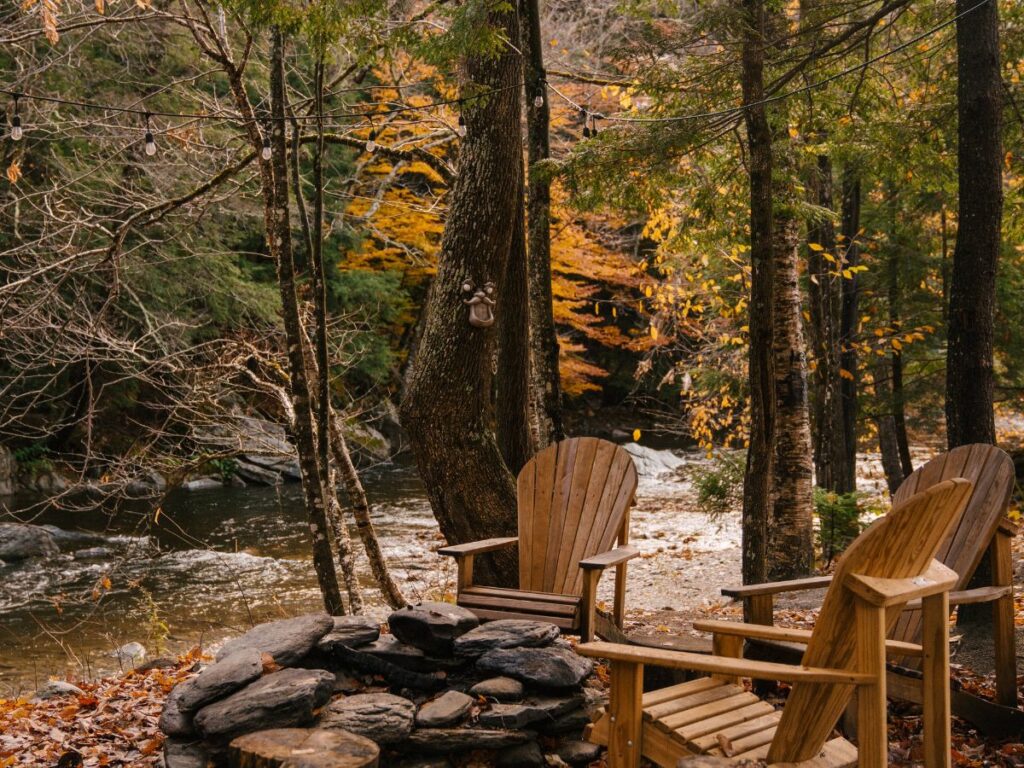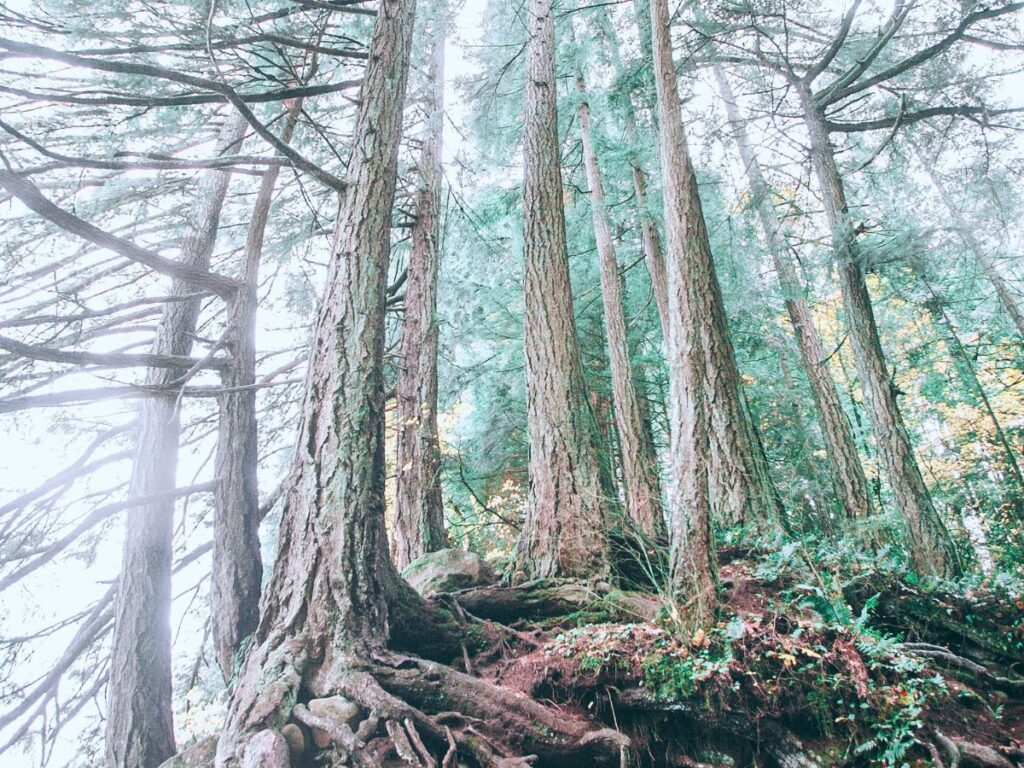Nestled in the heart of Yosemite National Park, the Mariposa Grove of Giant Sequoias stands as a majestic testament to the awe-inspiring beauty of nature. Home to over 500 mature sequoias, this grove is not just a destination; it’s an invitation to step into a world where time stands still among giants that reach towards the sky. As you plan your visit to this natural wonder, you embark on a journey that promises more than just a hike; it offers an unparalleled experience of walking amidst the oldest living beings on Earth. Whether you’re drawn by the allure of exploring ancient forests, eager to witness the grandeur of the largest trees by volume, or simply looking to find serenity in nature’s embrace, the Mariposa Grove of Giant Sequoias in Yosemite is a place where every step tells a story of resilience, beauty, and the enduring power of the natural world. Join us as we delve into everything you need to know before visiting this magnificent grove, from its rich history to the tranquil trails that await your footsteps.
History and Conservation Efforts
The Mariposa Grove of Giant Sequoias, a revered natural sanctuary within Yosemite National Park, is steeped in a rich tapestry of history that dates back centuries. This grove, home to over 500 mature giant sequoias, was known to the Native American tribes of the region long before it caught the attention of European settlers in the 19th century. Its discovery by non-native explorers in the mid-1800s marked a significant moment in American environmental history, leading to its protection under the Yosemite Grant Act of 1864, signed by President Abraham Lincoln. This act not only safeguarded Mariposa Grove but also laid the groundwork for the national park system, underscoring the grove’s historical importance not just in California, but in the entire United States.
In recent years, the focus has shifted towards restoring the Mariposa Grove of Giant Sequoias to ensure its preservation for future generations. The restoration efforts, initiated by the National Park Service and various conservation organizations, aim to protect the delicate ecosystem that supports these ancient trees. One of the key objectives has been to reduce the impact of human activity, including the removal of asphalt roads and parking lots to allow the natural water flow that is essential for the health of the sequoias. Additionally, these efforts have included the reintroduction of controlled burning practices, mimicking the natural fire cycles that are crucial for the regeneration of sequoia seeds.
The project for restoring the Mariposa Grove of Giant Sequoias represents a monumental commitment to conservation and underscores the importance of human stewardship in preserving natural wonders. Through these efforts, the grove continues to thrive, offering visitors a glimpse into the past and a hope for the future. As we walk among these giants, we are reminded of our role in protecting and honoring the natural world, ensuring that the Mariposa Grove remains a beacon of natural beauty and historical significance for centuries to come.

Getting There
Embarking on a journey to the Mariposa Grove of Giant Sequoias in Yosemite National Park is an adventure that begins with navigating the scenic routes leading to this natural wonder. Situated in the southern part of Yosemite, Mariposa Grove is accessible via a well-connected network of roads that offer breathtaking views of California’s rugged landscapes.
From Major Nearby Cities
- From San Francisco: Take I-580 east to I-205 east, then merge onto I-120 east towards Manteca. From there, follow CA-120 east into Yosemite National Park. The journey takes approximately 4 to 5 hours, depending on traffic and weather conditions.
- From Los Angeles: The fastest route is to take I-5 north to CA-99 north towards Bakersfield, followed by CA-41 north directly into Yosemite National Park. Expect this drive to take around 6 hours.
- From Sacramento: Drive east on US-50 towards Placerville, then south on CA-49 to Mariposa, and finally follow CA-140 east into Yosemite National Park. This route should take about 4 hours.
Parking and Shuttle Services
Upon reaching Yosemite National Park, visitors should head towards the Mariposa Grove Welcome Plaza. Here, parking is available, but it can fill up quickly during peak tourist seasons, typically from spring through fall. To ensure a smooth visit, especially during these busy months, it’s advisable to arrive early in the day.
Once parked, visitors can take advantage of the free shuttle service that transports guests from the Welcome Plaza to the Mariposa Grove of Giant Sequoias. The shuttle is not only a convenient way to reach the grove but also a commitment to preserving the area’s natural environment by reducing vehicular traffic.
The shuttle service operates daily, with frequent departures that allow visitors flexibility in planning their exploration of the grove. This service is crucial during the restoration efforts of the Mariposa Grove of Giant Sequoias, ensuring that guests can visit the grove with minimal impact on its delicate ecosystem.
Whether you’re traveling from a nearby city or further afield, the journey to Mariposa Grove is part of the experience—winding through the picturesque landscapes of Yosemite and arriving at a destination that promises awe and inspiration. Remember, the allure of these ancient sequoias is matched only by the importance of preserving their beauty for future generations, making every visit a step towards appreciating and protecting our natural world.
Exploring Mariposa Grove
Exploring Mariposa Grove of Giant Sequoias offers an immersive journey into the heart of ancient natural history, where visitors have the unique opportunity to stand among some of the largest and oldest living beings on our planet. This grove, located within Yosemite National Park, is home to over 500 mature giant sequoias, creating a landscape that feels both majestic and profoundly peaceful.
Main Attractions Within Mariposa Grove
- Grizzly Giant: Among the largest trees in Mariposa Grove, the Grizzly Giant stands as a sentinel of the ages. Estimated to be over 3,000 years old, this colossal tree is a must-see for visitors, embodying the enduring strength of nature.
- California Tunnel Tree: Carved in 1895 to allow horse-drawn carriages to pass through, this living tree offers a unique perspective on human interaction with nature and is one of the highlights of the grove.
- The Fallen Monarch: This massive fallen tree provides a different view of the life cycle of giant sequoias, illustrating the ecological role these giants play even in death.

Tips for Visiting Mariposa Grove of Giant Sequoias
What to Bring:
- With several miles of trails varying in difficulty, sturdy shoes are essential for a comfortable exploration.
- Stay hydrated and energized, especially during the warmer months. However, remember to carry out all trash to keep the grove pristine.
- Weather can change rapidly in Yosemite, so layered clothing will allow you to adjust to varying temperatures.
- The scenic beauty of Mariposa Grove is breathtaking, and you’ll want to capture these memories.
Minimizing Environmental Impact:
- Stay on Designated Trails: Protecting the delicate root systems of these ancient trees is crucial. Wander off the trail can cause irreversible damage.
- Leave No Trace: Pack out everything you bring in to help preserve the natural beauty of Mariposa Grove.
- Respect Wildlife: Keep a safe distance from any animals you encounter and do not feed them.
- Use Shuttle Services: Utilizing the shuttle from the Welcome Plaza reduces vehicle emissions and helps in the efforts of restoring the Mariposa Grove of Giant Sequoias.
Visiting Mariposa Grove is not just an excursion; it’s an opportunity to connect with nature on a profound level. By following these tips and respecting the environment, you contribute to the preservation of this magnificent grove for future generations. As you explore, let the tranquility and grandeur of Mariposa Grove inspire a deeper appreciation for the natural world and our place within it.
Hiking and Trails
Embarking on a Mariposa Grove of Giant Sequoias hike is an adventure through the heart of one of nature’s most awe-inspiring landscapes. With trails that cater to a variety of fitness levels and interests, visitors can choose their path based on what they hope to discover and experience among these ancient giants. Here’s a detailed guide to help you navigate the Mariposa Grove of Giant Sequoias trail options, including insights into the difficulty levels and the unique sights each path offers.
| Trail Name | Difficulty | Length |
| Big Trees Loop Trail | Easy | 0.3 miles (0.5 km) loop |
| Grizzly Giant Loop Trail | Moderate | 2 miles (3.2 km) loop |
| Mariposa Grove Trail to Wawona Point | Moderate to Strenuous | Approximately 7 miles (11.3 km) round trip |
| Guardians Loop Trail | Strenuous | 6.5 miles (10.5 km) loop |
Big Trees Loop Trail
Perfect for those seeking a short, accessible walk, this loop offers close-up views of some of the grove’s most famous sequoias, including the Grizzly Giant and the California Tunnel Tree. It’s an excellent introduction to the grove, suitable for all ages and abilities.
Grizzly Giant Loop Trail
This trail takes you deeper into the grove, offering a more immersive experience. You’ll encounter the Grizzly Giant, one of the largest trees in Mariposa Grove, and the California Tunnel Tree. The trail’s moderate incline makes it a good choice for those looking for a bit more challenge without embarking on a strenuous hike.
Mariposa Grove Trail to Wawona Point
For those willing to venture further, this trail leads to Wawona Point, offering breathtaking views of the Sierra Nevada and the Wawona Valley. Along the way, you’ll pass through serene meadows and dense sequoia forests, providing a comprehensive exploration of the grove’s diverse ecosystems.
Guardians Loop Trail
This challenging trail is designed for experienced hikers seeking a full-day adventure. It circles the upper portion of Mariposa Grove, showcasing a less-visited but equally spectacular array of giant sequoias. The climb is rewarded with stunning vistas and the tranquility of secluded forest areas.
What to Expect on Each Hike
Regardless of the trail chosen, hikers can expect to be enveloped in the majesty of towering sequoias, each with its own story and presence. The air is fresh, the environment is serene, and the gentle giants that stand guard over the land offer a perspective that is both humbling and inspiring. Wildlife sightings, from birds to deer, add an element of surprise and delight to the journey.
Preparation Tips
- Sturdy hiking boots or shoes are recommended for all trails.
- Keep hydrated and energized, especially on longer hikes.
- Protect the delicate ecosystem by sticking to marked paths.
- Help preserve the grove’s natural beauty for future visitors.

Wildlife and Vegetation
Within the towering shadows of the Mariposa Grove of Giant Sequoias, a diverse ecosystem thrives, offering visitors a glimpse into the unique flora and fauna that inhabit this ancient forest. The grove, a jewel of Yosemite National Park, is not only home to the giant sequoias but also to a variety of other plant species and wildlife that contribute to the complexity and beauty of this natural habitat.
Unique Flora and Fauna
Flora: Beyond the giant sequoias, Mariposa Grove features a rich understorey of flora, including dogwoods, which bloom beautifully in the spring, and the California black oak, which provides essential habitat and food for many animal species. Ferns and wildflowers, such as lupines and penstemons, add splashes of color to the forest floor, especially in the warmer months.
Fauna: The grove’s fauna is equally diverse. Black bears are perhaps the most notable inhabitants, roaming the forest in search of food. While sightings are thrilling, visitors must keep a safe distance and follow park guidelines to avoid disturbing them. Other common sightings include mule deer, squirrels, and a variety of bird species, such as the Steller’s jay and the mountain chickadee, which fill the grove with their calls. Less visible but equally important are the smaller creatures, like insects and amphibians, which play crucial roles in the grove’s ecosystem.
Respecting Wildlife and Protecting the Ecosystem
The majesty of Mariposa Grove and its inhabitants reminds us of the importance of respecting wildlife and adhering to park guidelines designed to protect this fragile ecosystem. Visitors are encouraged to:
- Always keep a safe distance from animals to avoid disturbing them. Use binoculars or a camera with a zoom lens to get a closer look without interfering with their natural behaviors.
- Yosemite National Park has specific rules designed to protect both the wildlife and visitors. This includes storing food properly to avoid attracting bears and other wildlife.
- Staying on designated trails helps protect the understorey plants and the delicate soil ecosystem. Off-trail walking can damage plant life and disturb the habitat of ground-nesting animals.
- To keep Mariposa Grove as pristine as possible, carry out all trash and leave natural objects, such as pine cones and rocks, where you find them.
Planning Your Visit
Planning your visit to the Mariposa Grove of Giant Sequoias requires thoughtful consideration to ensure a memorable and smooth experience. This majestic grove, nestled within Yosemite National Park, offers visitors the chance to wander among ancient giants and embrace the serenity of nature. To help you prepare, here’s what you need to know about the best times to visit, permits, fees, regulations, and accessibility.
Best Times of the Year to Visit Mariposa Grove of Giant Sequoias
The grove is accessible year-round, but the experience varies significantly with the seasons. The ideal times to visit are late spring through early fall.
Spring: Witness the snowmelt and the awakening of the grove’s flora. Trails may be wet or snowy early in the season.
Summer: Enjoy warm weather and full access to all trails. This is also the busiest season, so expect more visitors.
Fall: Experience the changing colors and cooler temperatures. Crowds tend to diminish, making it a peaceful time to explore.
Winter: Snow transforms the grove into a quiet, winter wonderland. Access may be limited, and snowshoes or skis might be required.
Necessary Permits, Fees, and Regulations
Visitors to Yosemite National Park must pay an entrance fee, valid for seven days. Fees vary depending on the mode of transportation (vehicle, motorcycle, or foot). For those planning overnight backpacking trips in the wilderness areas around Mariposa Grove, a wilderness permit is required. To protect the grove and its ecosystem, visitors are asked to follow park regulations, including staying on marked trails, not feeding wildlife, and adhering to Leave No Trace principles.

Accessibility Information and Facilities Available for Guests
Yosemite National Park strives to accommodate visitors of all abilities.
Accessible parking is available at the Mariposa Grove Welcome Plaza, with shuttle service to the grove. The shuttle is equipped to accommodate wheelchairs. The Mariposa Grove features some accessible trails, allowing visitors with mobility challenges to experience the beauty of the giant sequoias. The Grizzly Giant Loop Trail, for example, offers an accessible path to view some of the grove’s most famous trees. Accessible restrooms are available at the Welcome Plaza and within the grove. Visitors with specific accessibility needs are encouraged to contact the park in advance to inquire about available services and accommodations.
Visiting Mariposa Grove of Giant Sequoias in Yosemite is an enchanting experience, offering a connection to the natural world that resonates deeply. By planning your visit with these considerations in mind, you’ll ensure a trip that’s not only enjoyable but also respectful of the extraordinary environment that makes this place so special.
Conservation and How You Can Help
The conservation of the Mariposa Grove of Giant Sequoias is not just a responsibility—it’s a privilege. As stewards of one of the natural world’s most awe-inspiring wonders, we are tasked with ensuring the survival of these ancient giants for generations to come. The Mariposa Grove, with its over 500 mature sequoias, stands as a testament to the resilience and majesty of the natural world, offering us a glimpse into the past and a vision for the future where such wonders are preserved and cherished.
The Importance of Conserving Mariposa Grove of Giant Sequoias
The conservation of Mariposa Grove is crucial for several reasons. These towering trees are not only iconic symbols of natural beauty but also play a vital role in the ecosystem. They provide habitat for a diverse range of species, help regulate the climate, and contribute to the water cycle. Moreover, as some of the oldest living organisms on Earth, giant sequoias offer invaluable insight into environmental change over millennia. Protecting these ancient beings ensures the preservation of these ecological benefits and the continuation of scientific research and education.
How You Can Help
Respect the Grove: The simplest yet most effective way to contribute to the conservation of Mariposa Grove is by respecting the natural environment during your visit. Stay on designated trails to protect the fragile root systems of the sequoias, refrain from carving or damaging the trees, and dispose of waste properly to keep the grove clean.
Support Restoration Efforts: The National Park Service and conservation organizations often undertake projects aimed at restoring the Mariposa Grove of Giant Sequoias and protecting its ecosystem. Financial contributions to these efforts can help fund critical conservation work, including habitat restoration and the implementation of controlled fire regimes to mimic natural processes that sequoias depend on for regeneration.
Volunteer: Participating in volunteer programs with Yosemite National Park or associated conservation groups is a hands-on way to contribute to the preservation of Mariposa Grove. Volunteer activities might include trail maintenance, educational outreach, and assisting with research projects.
Educate Others: Raising awareness about the importance of conserving the Mariposa Grove of Giant Sequoias and the challenges it faces is crucial. Share your knowledge and experiences with others, encouraging them to visit responsibly and support conservation efforts.
Practice Leave No Trace Principles: Adhering to Leave No Trace principles during your visit minimizes your environmental impact. This includes planning and preparing for your visit, disposing of waste properly, leaving what you find, and minimizing campfire impacts.
Key Takeaways
- The grove is a natural treasure within Yosemite National Park, home to over 500 mature giant sequoias, and has been protected for its historical and ecological significance since the 19th century.
- Ongoing efforts to restore and conserve the Mariposa Grove of Giant Sequoias highlight the importance of preserving these ancient trees for future generations, emphasizing the role of visitors in these efforts.
- To fully enjoy the Mariposa Grove, visitors should consider the best times to visit, be aware of the necessary permits and fees, and understand the regulations and facilities available, including accessibility options.
- The grove offers several hiking trails, ranging from easy to strenuous, allowing visitors of all fitness levels to explore the sequoias and experience the grove’s natural beauty up close.
- Mariposa Grove is not only about the giant sequoias but also hosts a diverse range of flora and fauna, emphasizing the importance of respecting wildlife and following park guidelines to protect the ecosystem.
- Visitors can contribute to the grove’s preservation through respectful behavior, supporting restoration efforts, volunteering, and educating others on the importance of conservation.
FAQs
- What is the best time of year to visit Mariposa Grove?
Late spring through early fall is ideal, offering pleasant weather and full access to trails. - Do I need a reservation to visit Mariposa Grove?
No reservations are required to visit Mariposa Grove, but entrance fees for Yosemite National Park apply. - Are there any entrance fees for Mariposa Grove?
Mariposa Grove itself does not have a fee, but entrance fees for Yosemite National Park apply. - Can I see the Grizzly Giant without hiking far?
Yes, the Grizzly Giant is accessible via the Grizzly Giant Loop Trail, a moderate 2-mile loop. - Is Mariposa Grove wheelchair accessible?
Certain areas, including the lower grove via the shuttle service and some paths, are accessible. - Are pets allowed in Mariposa Grove?
Pets are not allowed on the trails in Mariposa Grove to protect the wildlife and ecosystem. - Is there parking available at Mariposa Grove?
Yes, there is parking at the Mariposa Grove Welcome Plaza, with shuttle service to the grove. - Are there any facilities like restrooms in Mariposa Grove?
Yes, there are restroom facilities at the Welcome Plaza and within the grove. - Can I bring my own food into Mariposa Grove?
Yes, but pack out all your trash to keep the grove clean. - How long does it take to explore Mariposa Grove?
It varies, from a quick 30-minute walk on the Big Trees Loop to several hours for longer hikes. - Is there cell phone service in Mariposa Grove?
Cell phone coverage is limited and can be unreliable in Yosemite National Park, including Mariposa Grove.
